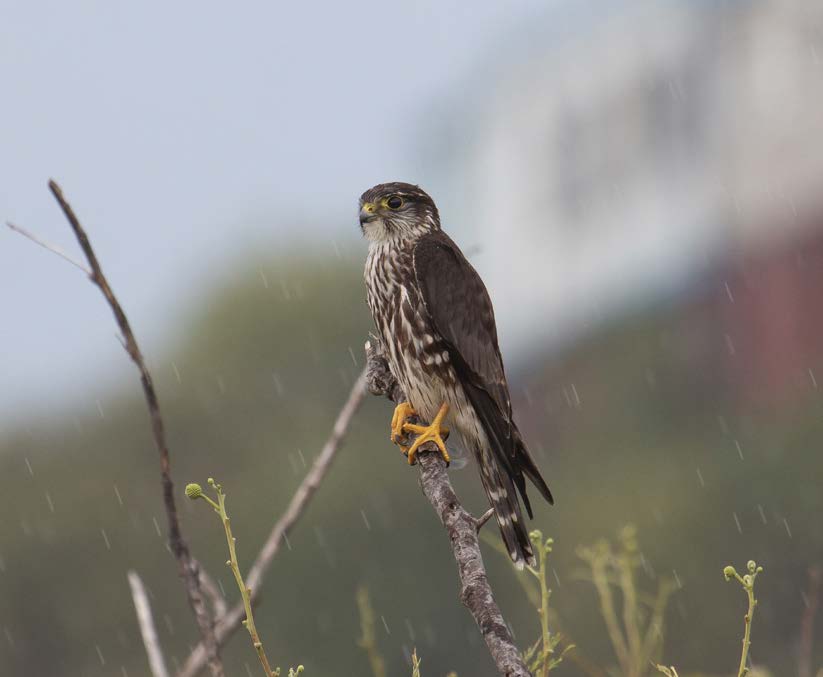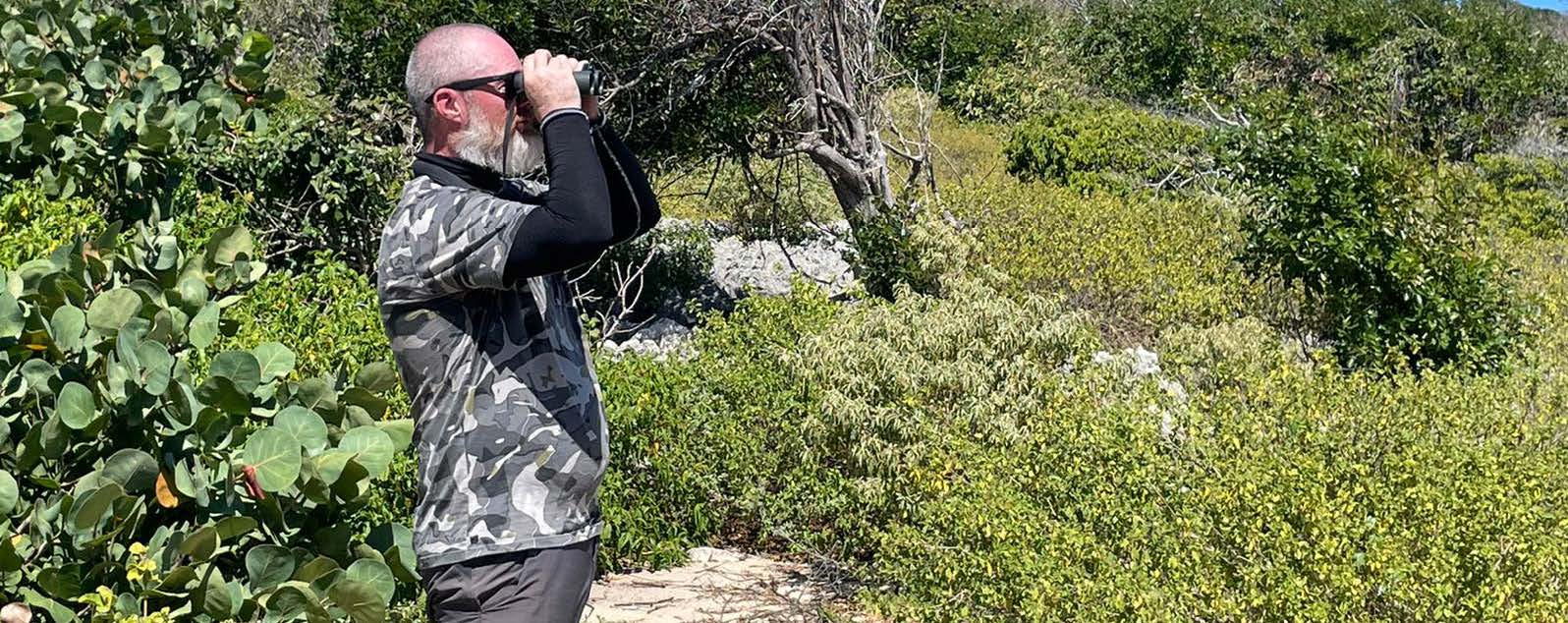A project for the protection of birds
known and certain species benefit from regular scientific monitoring, the same is not true for the rest of the island. It is to fill this gap that Vincent Lemoine, a naturalist fascinated by ornithology, has covered the entire French side, binoculars in hand. Commissioned by the LPO for the LIFE BIODIV’OM program as part of the ZICO (Zone of interest for the protection of birds), his goal for this project was to create a map of the species present on the island, starting by doing an inventory. As a result, Vincent Lemoine explored more than 130 sites between November 1, 2022 and February 28, 2023, and discovered a wide general diversity, divided among the salt ponds and the heights of Pic Paradis, as well as along the coasts, and observed 94 species of birds. He made a special mention of migrating species, with a minimum of 170 blue-winged teals at just one site, and he observed eight species of new world warblers. Shorebirds—sandpipers, greater yellowlegs, little ringed plovers—are often seen, as well as the presence of a group of 200 blackwing stilts, regrouped in a small corner of the pond. Tropicbirds are among the others who chose to live on the well-named Cliff of Birds, where at least three nests were noted with 15 individual birds observed. Vincent Lemoine also noted several differences between the ornithological history of Saint Martin and that of Guadeloupe. For example, if the three species endemic to the Lesser Antilles— the scaly-breasted thrasher, the purple-throated Carib hummingbird, and the bridled quail-dove (also present in Puerto Rico)—all live in Saint-Martin, they are very lightly represented, even rare for the latter two species, and the island does not have a single species endemic it to alone. On the other hand, certainly due to decreased activity, various hunted species are perhaps more numerous than in Guadeloupe. As for birds migrating from North America, their populations are more numerous than in the islands in the southern Caribbean, due to Saint Martin’s proximity to the North American continent. Shared species such as the black-faced grassquit, the bananaquit, the Zenaida dove, and the common ground dove are everywhere. There are also non-endemic species such as the Eurasian collared dove and the house sparrow, and a newcomer, the bare-eyed pigeon. The essential goal for this ornithologist is, outside to the sites already protected in the Réserve Naturelle, to reinforce the protection of birds by designating sites as the most important for conservation, such as Pic Paradis or the Cliff of Birds.


















